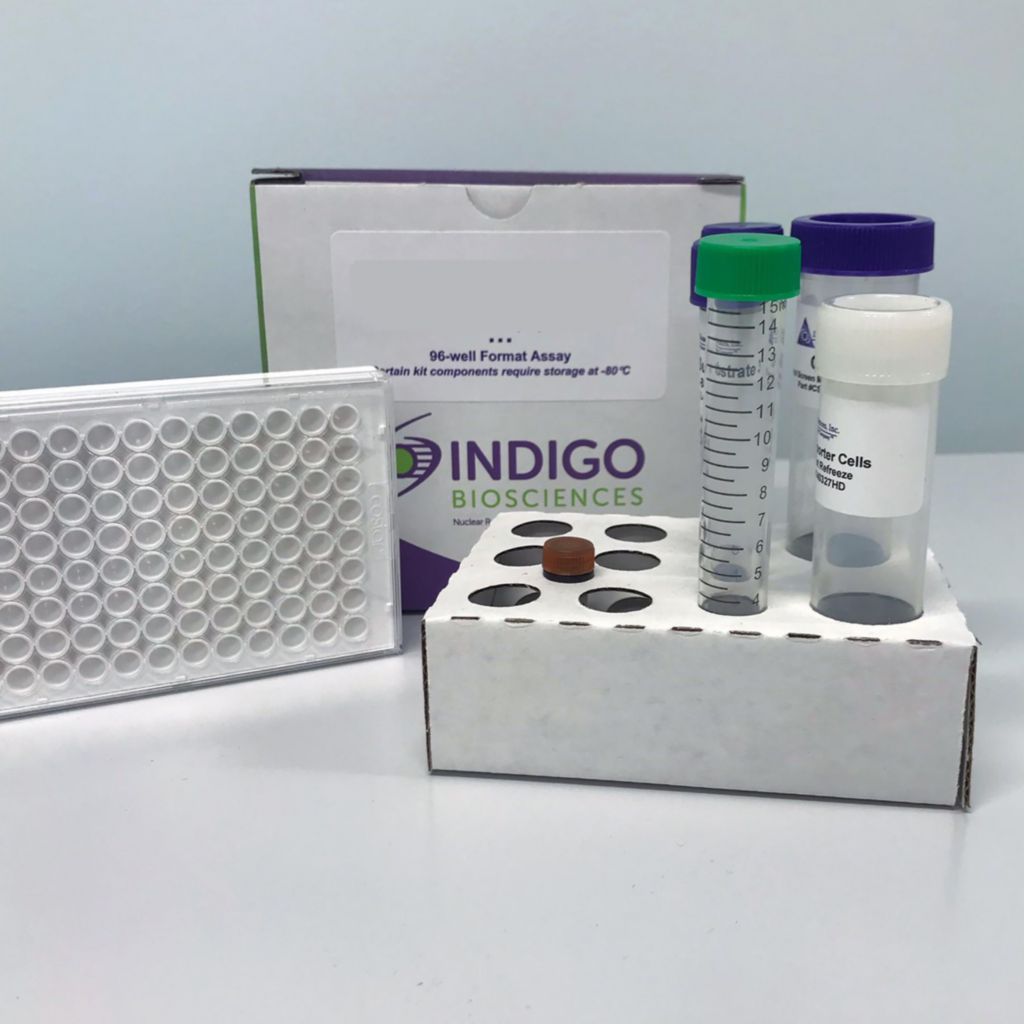Product Description and Product Data
This is an all-inclusive cell-based luciferase reporter assay kit targeting the Human Pregnane X Receptor (PXR). INDIGO’s PXR reporter assay utilizes proprietary mammalian cells that have been engineered to provide constitutive expression of the PXR. In addition to PXR Reporter Cells, this kit provides two optimized media for use during cell culture and in diluting the user’s test samples, a reference agonist, Luciferase Detection Reagent, and a cell culture-ready assay plate. The principal application of this assay is in the screening of test samples to quantify any functional activity, either agonist or antagonist, that they may exert against human PXR. This kit provides researchers with clear, reproducible results, exceptional cell viability post-thaw, and consistent results lot to lot. Kits must be stored at -80C. Do not store in liquid nitrogen. Note: reporter cells cannot be refrozen or maintained in extended culture.
Features
Ready to Use Upon Receipt
- Includes All Needed Components
- Contains Transfected Reporter Cells
- Eliminates Cell Licensing Fees
- Clear, Reproducible Results
- Consistent Results Lot to Lot
Product Specifications
| Target Type | Nuclear Hormone Receptor | ||
| Species | Human | ||
| Receptor Form | Hybrid | ||
| Assay Mode | Agonist, Antagonist | ||
| Kit Components |
| ||
| Shelf Life | 6 months | ||
| Orthologs Available | Yes | ||
| Shipping Requirements | Dry Ice | ||
| Storage temperature | -80C |
Data
Target Background
Pregnane X Receptor is a nuclear receptor that binds and is activated by variety of endogenous and xenobiotic compounds. Activated by the antibiotic rifampicin and various plant metabolites, such as hyperforin, guggulipid, colupulone, and isoflavones, PXR’s response to specific ligands is species-specific. It is activated by naturally occurring steroids, such as pregnenolone and progesterone, and binds to a response element in the promoters of the CYP3A4 and ABCB1/MDR1 genes.
INDIGO’s Pregnane X Receptor (PXR) reporter assay utilizes proprietary mammalian cells engineered to provide constitutive, high-level expression of the Human Pregnane X Receptor (NR1I2), a ligand-dependent transcription factor commonly referred to as PXR. PXR is also known as the Steroid and Xenobiotic sensing nuclear receptor (SXR).
INDIGO’s Reporter Cells express a hybrid form of human PXR. The N-terminal sequence encoding the PXR DNA binding domain (DBD) has been substituted with that of the yeast GAL4-DBD. The native PXR ligand binding domain (LBD) and other C-terminal domains remain intact and functional. Ligand interaction activates the receptor, causing it to binds to the GAL4 DNA binding sequence, which is functionally linked to a resident luciferase reporter gene. Thus, quantifying changes in luciferase activity in the treated reporter cells provides a sensitive surrogate measure of the changes in PXR activity. The principle application of this reporter assay system is in the screening of test samples to quantify any functional activity, either agonist or antagonist, that they may exert against human PXR.
Citations
Also available as a service

